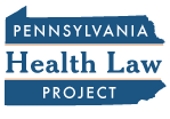Medicaid Enrollees: Access and Quality Are Good
Medicaid beneficiaries are generally satisfied with their access to care and the quality of care they receive.
Or so reports a new study based on results of the federal Medicaid Consumer Assessment of Healthcare Providers and Systems (CAHPS) survey for December of 2014 to July of 2015.
 According to the survey, nearly half of Medicaid patients rated their overall care 7.9 or greater on a scale of 10; 84 percent reported that they had been able to receive all of the care they needed over the past six months; and most were generally satisfied with the coverage. Relatively few reported problems finding providers willing to accept their Medicaid coverage.
According to the survey, nearly half of Medicaid patients rated their overall care 7.9 or greater on a scale of 10; 84 percent reported that they had been able to receive all of the care they needed over the past six months; and most were generally satisfied with the coverage. Relatively few reported problems finding providers willing to accept their Medicaid coverage.
Survey results generally were slightly more positive in Medicaid expansion states than in non-expansion states.
Pennsylvania safety-net hospitals serve especially large numbers of Medicaid patients.
Learn more about how Medicaid beneficiaries view the quality and accessibility of the care they receive in the JAMA Internal Medicine report “What Enrollees Think of Medicaid | Health Care Reform,” which can be found here.
 According to the PHC4 report,
According to the PHC4 report, Among the issues addressed in the letter are how the House-passed proposal would detract from the role of Medicaid in fighting the state’s opioid crisis; the proposed reduction in tax credits to help purchase health insurance; the challenge posed by a per capita approach to Medicaid financing; the potential loss of health care jobs; the likelihood of large numbers of Pennsylvanians losing their health insurance and state Medicaid costs rising significantly; and the erosion of consumer protections.
Among the issues addressed in the letter are how the House-passed proposal would detract from the role of Medicaid in fighting the state’s opioid crisis; the proposed reduction in tax credits to help purchase health insurance; the challenge posed by a per capita approach to Medicaid financing; the potential loss of health care jobs; the likelihood of large numbers of Pennsylvanians losing their health insurance and state Medicaid costs rising significantly; and the erosion of consumer protections. Included in this edition are articles on new criteria for Medicaid coverage of high-cost hepatitis C drugs and the release of a draft of the state’s proposed Medicaid quality strategy; an update on Community HealthChoices, Pennsylvania’s new program of Medicaid managed long-term services and supports; an overview of Medicaid-covered behavioral health services; a summary of recent federal proposals with implications for the state’s Medicaid program; and a report on the nomination of Teresa Miller to lead the new Department of Health and Human Services that Governor Wolf has proposed establishing.
Included in this edition are articles on new criteria for Medicaid coverage of high-cost hepatitis C drugs and the release of a draft of the state’s proposed Medicaid quality strategy; an update on Community HealthChoices, Pennsylvania’s new program of Medicaid managed long-term services and supports; an overview of Medicaid-covered behavioral health services; a summary of recent federal proposals with implications for the state’s Medicaid program; and a report on the nomination of Teresa Miller to lead the new Department of Health and Human Services that Governor Wolf has proposed establishing.
 , the National Academies of Sciences, Engineering, and Medicine addresses the question of what social risk factors might be worth considering in Medicare value-based payment programs and how those risk factors might be reflected in value-based payments.
, the National Academies of Sciences, Engineering, and Medicine addresses the question of what social risk factors might be worth considering in Medicare value-based payment programs and how those risk factors might be reflected in value-based payments. Under the new criteria, patients with lower scores of severity of hepatitis C will become eligible for treatment. Previously, Medicaid patients were required to show more advanced signs of illness before the medicine was provided to them.
Under the new criteria, patients with lower scores of severity of hepatitis C will become eligible for treatment. Previously, Medicaid patients were required to show more advanced signs of illness before the medicine was provided to them.
 Governor Tom Wolf offered such a proposal in his FY 2018 budget message and the Pennsylvania General Assembly is now weighing the merits of this proposal.
Governor Tom Wolf offered such a proposal in his FY 2018 budget message and the Pennsylvania General Assembly is now weighing the merits of this proposal.